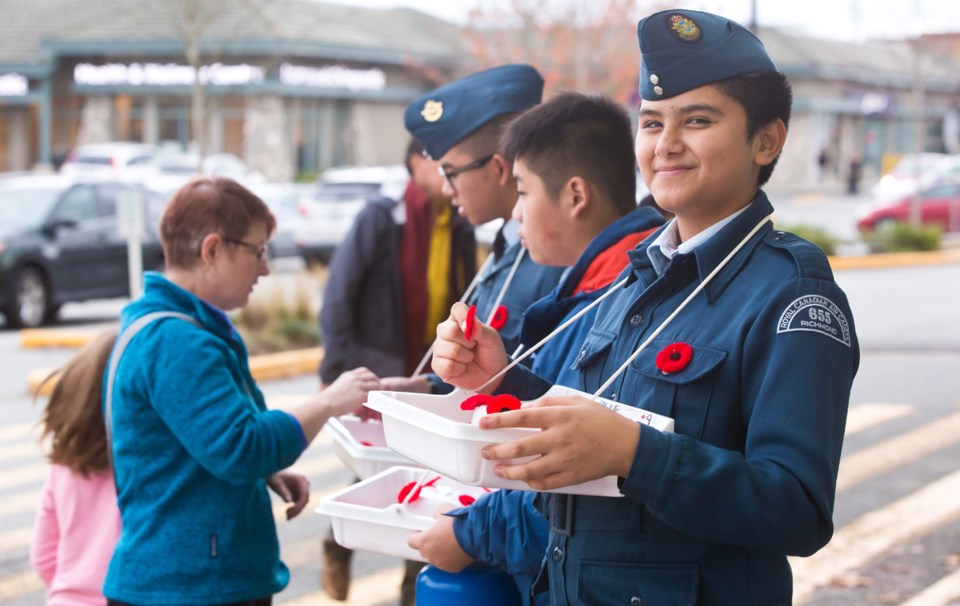It is, once again, a time of remembrance across Canada. In fact, the 52 members of the Commonwealth of Nations (except Mozambique) commemorate the war dead with a Remembrance Day ceremony.
The first Remembrance Day, on Nov. 11, 1919, was created at the request of King George V, to remember those who died in the service of their king in the Great War, which burst upon Europe in a series of tragic events set off by the assassination of Archduke Franz Ferdinand in Sarajevo in June 1914.
The failure of diplomacy, and an incredibly complex system of international treaties brought Germany and the Austro-Hungarian Empire into armed conflict with Russia, France, Great Britain and several other minor nations. In the matter of Great Britain, her entire empire was therefore “at war” and that included Canada.
Canada’s role in the Great War was substantial. Eight per cent of our country’s population enlisted, five per cent served overseas. Fourteen per cent of those who served overseas were killed in service.
We tend to recall the Great War as an endless series of mud-filled trenches, cold, wet misery and random death from shellfire. And that is a good place to start. But Canada’s first Great War casualties occurred far away, off the coast of Chile, in what is known as the Battle of Coronel.
Four young Canadians were serving in the Royal Navy and two battleships were sunk with all hands, including Midshipmen Malcolm Cann, 19, John V. W. Hatheway, 19, William Archibald Palmer, 20, and Arthur Wiltshire Silver, 20.
The Great War churned through another 61,000 young Canadians, including Lt. Col. John McCrae, who wrote In Flanders Fields in the midst of combat in 1915. This poem is recited around the world during this season of remembrance, and on Friday, Nov. 11, the fabulous choir from RC Palmer secondary will perform their deeply beautiful version of this classic Canadian work of art. Col. McCrae would himself become one of those who lie in Flanders Fields, dying of pneumonia while serving in a hospital in France, in 1918.
The Great War was ended by an Armistice, signed at 5 a.m. on Nov. 11, 1918. The wording of the Armistice called for the guns to cease fire at the 11th hour of the 11th day of the 11th month, less than six hours away.
But the fighting continued to the very last minute. Pte. George Lawrence Price, a 26-year old Nova Scotian, conscripted into the army in 1917, was involved in a small-arms operation clearing houses in a Belgian village. At 10:58 a.m. on Nov. 11, 1918, Pte. Price was shot through the chest and died just two minutes before the end of the war, becoming the final Commonwealth casualty, and showing the world that Canada gave right to the bitter, bloody end.
Remembrance Day commemorates the dead. Every single one of them. From every Canadian military mission, around the globe, across the seven seas, and those who have given their lives to Canada here at home. Remembrance Day demands from all of us the minor sacrifice of pausing for two minutes every year, at 11 a.m. on Nov. 11 to think of Canadians who died in the service of our country. The poppies that grow so abundantly in Flanders Fields have become the worldwide symbol of remembrance, which is why so many of us choose to wear the poppy at this time of year.
The Richmond Remembrance Day Committee, acting jointly for the Royal Canadian Legion Branch 291 (Richmond) and the Army, Navy and Airforce Veterans In Canada (Steveston Unit 284), have organized this year’s Remembrance Day service on Friday Nov. 11, at the Richmond Cenotaph outside Richmond City Hall on No. 3 Road.
Richmond’s two Army Cadet Corps, 2947 12 Service Battalion, and 2381 BCR Irish Fusiliers, will mount a cenotaph vigil at 7 a.m. The parade and ceremonies begin at 10:20 a.m.
The City of Richmond and the Richmond RCMP provide greatly valued support in presenting this event, which will feature almost 1,000 parade participants. In addition to outdoor viewing, the City of Richmond broadcasts the event inside city hall, and on-line. Visit Richmond.ca for the online broadcast.
After the service, the Richmond Remembrance Day Reception is held in the city hall galleria. Everyone is welcome.
The committee invites you to join us for this most important event. Check the forecast and dress appropriately. Above all, wear a poppy, and remember.
Matthew McBride (Royal Canadian Navy., Ret’d.) is chair of the Richmond Remembrance Day committee



